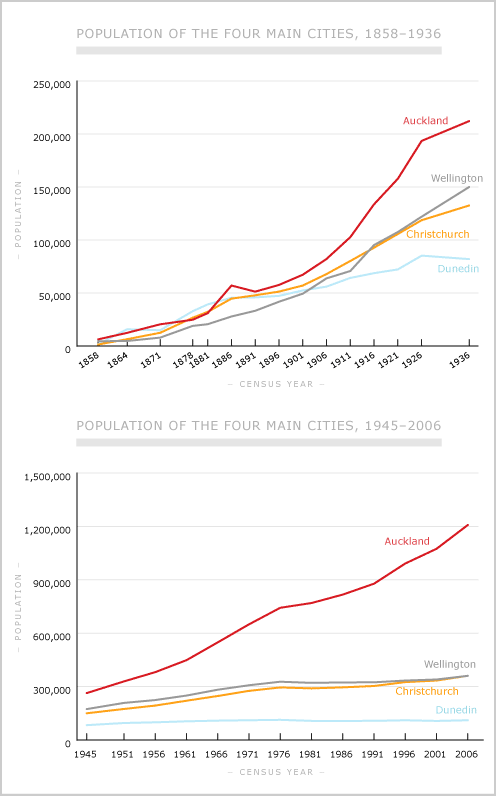
In the 19th century New Zealand’s rugged landscape and slow communications conspired against the rise of one primary city, as had occurred in the Australian colonies. Instead, four main cities of near-equal size emerged, separated by near-equal distances: Auckland, Wellington, Christchurch and Dunedin. The population of the four cities largely kept pace with each other until 1911, when Auckland’s growth began to outstrip the others. Auckland’s rise became entrenched after 1945, when it raced ahead of the other main cities. By 2006 it contained nearly a third of the national population and was New Zealand’s primary city.
Te whakamahi i tēnei tūemi
Te Ara - The Encyclopedia of New Zealand

This item is licensed under a Creative Commons Attribution-NonCommercial 3.0 New Zealand Licence
Source: G. T. Bloomfield, New Zealand: a handbook of historical statistics. Boston, Mass.: G. K. Hall, 1984; New Zealand census, 1986–2006







Tāpiritia te tākupu hou